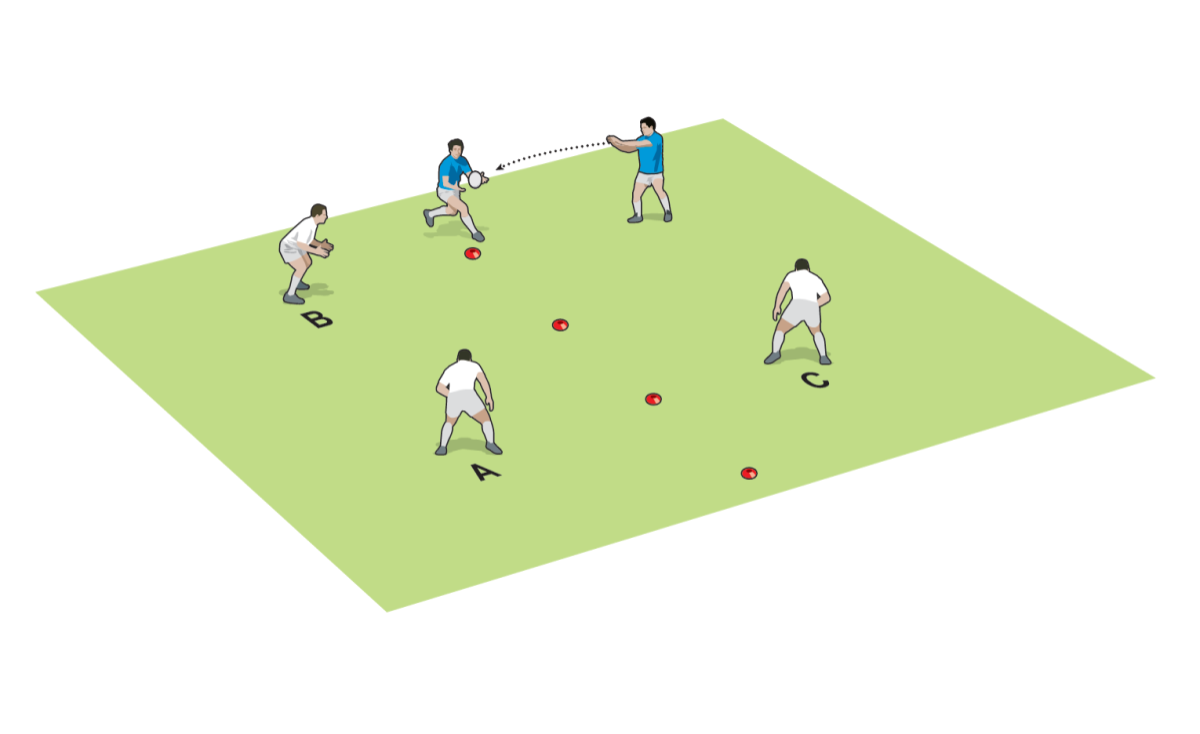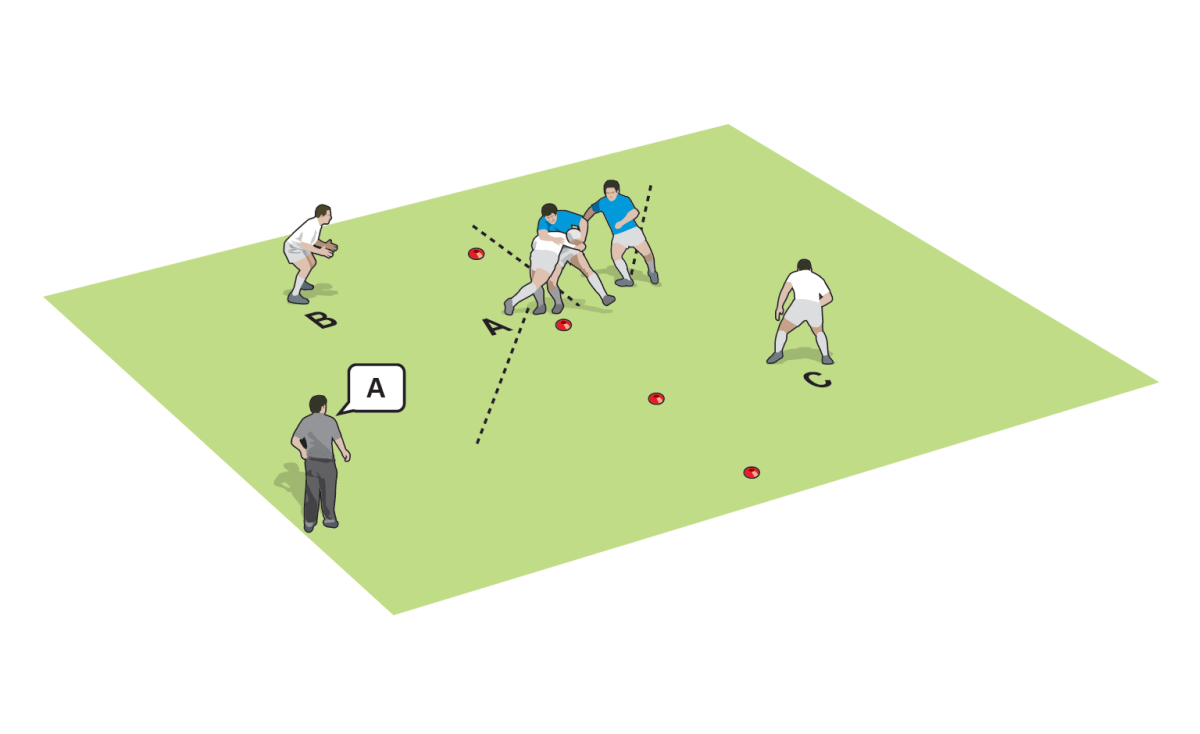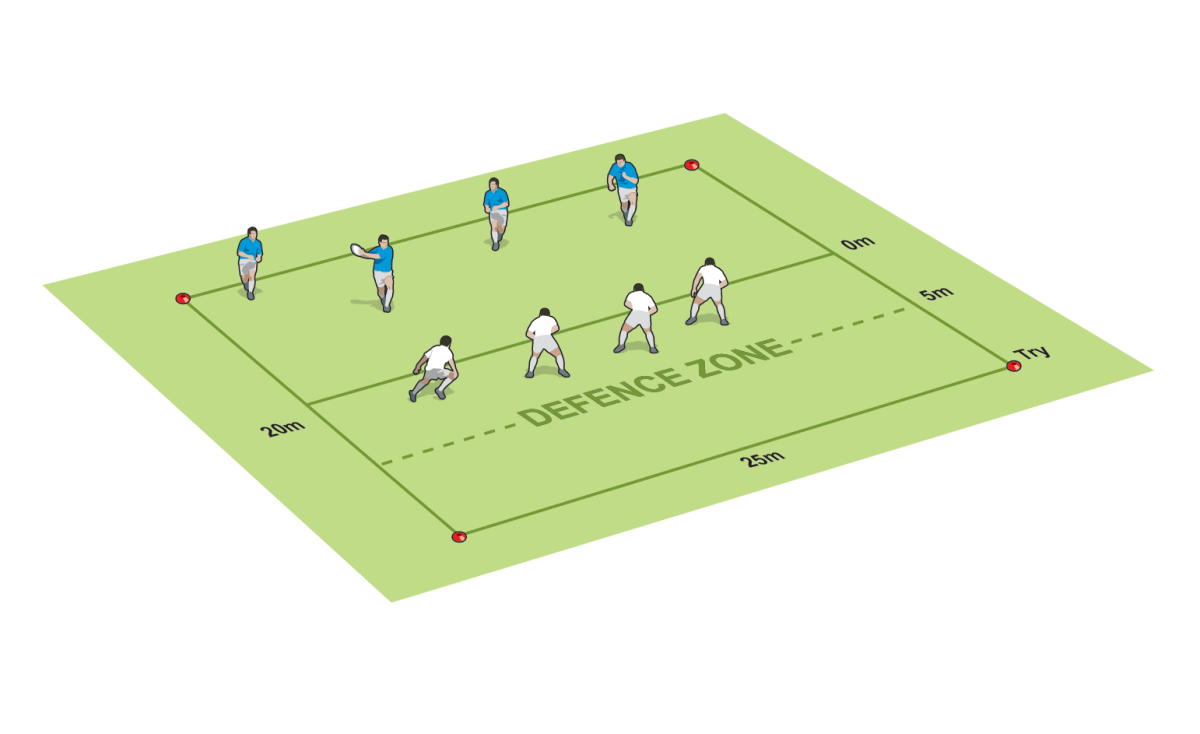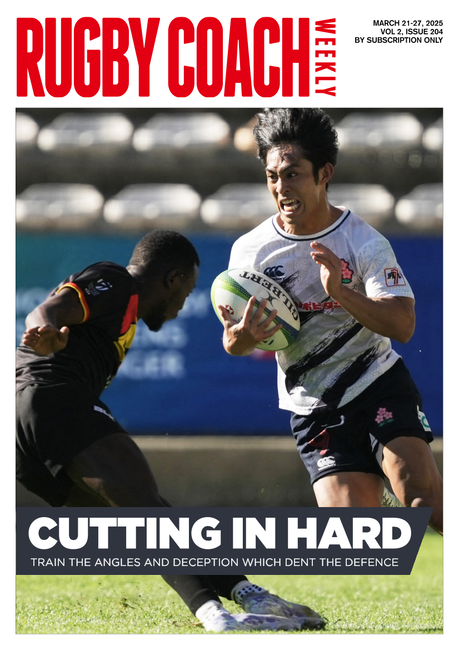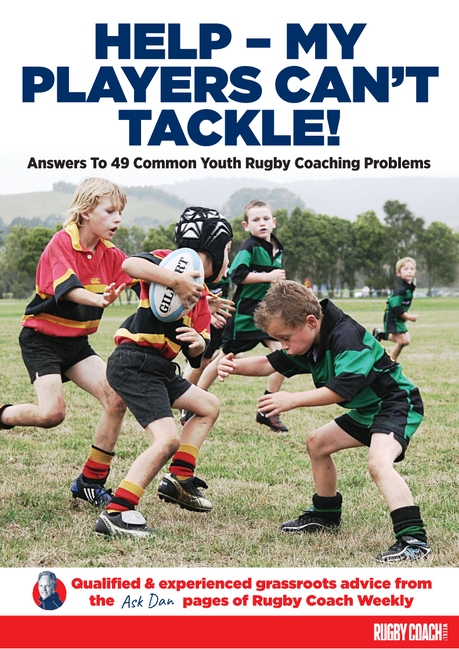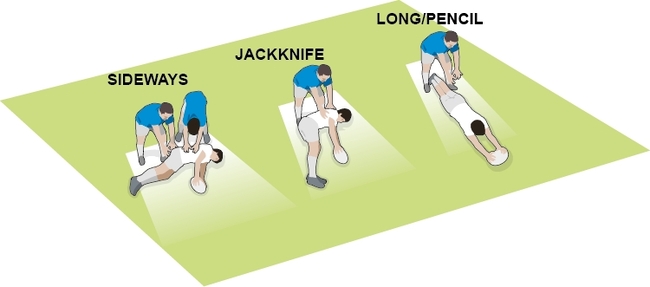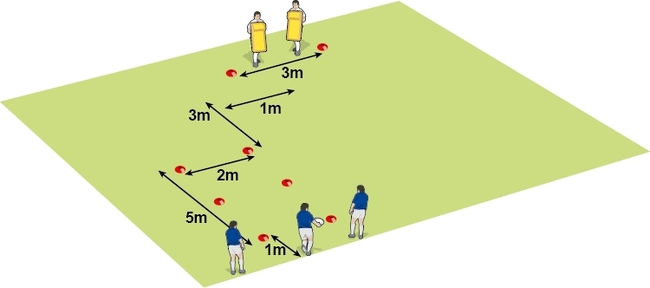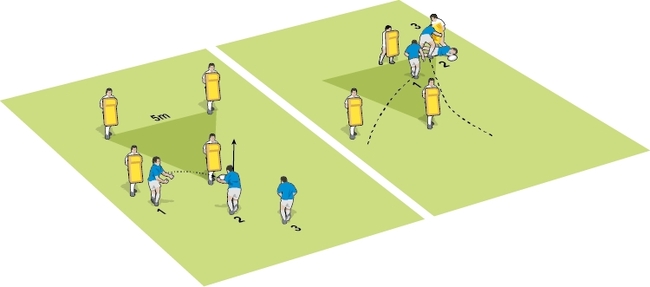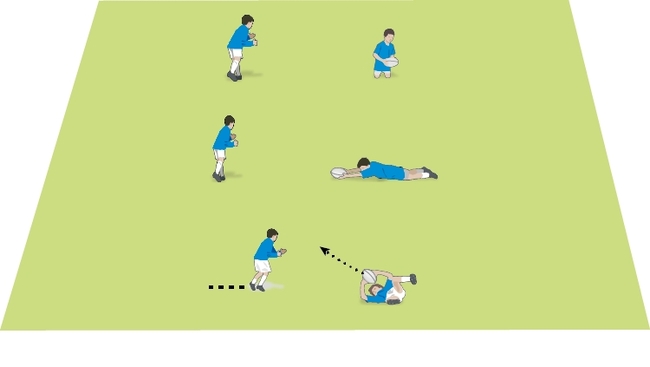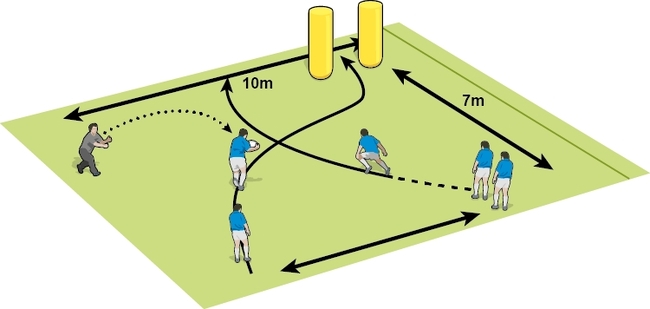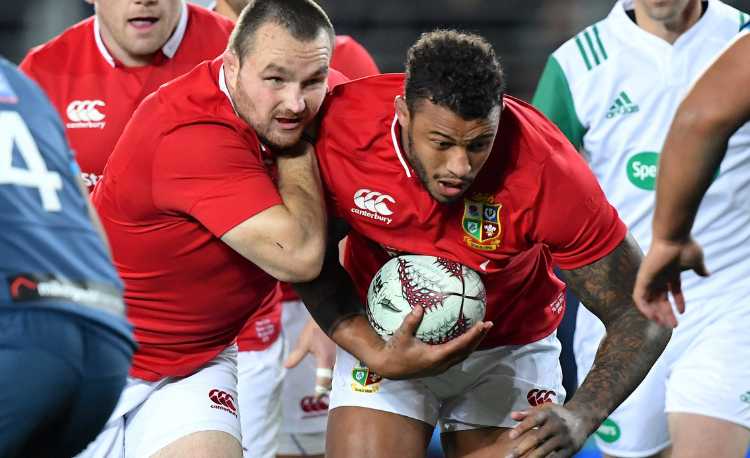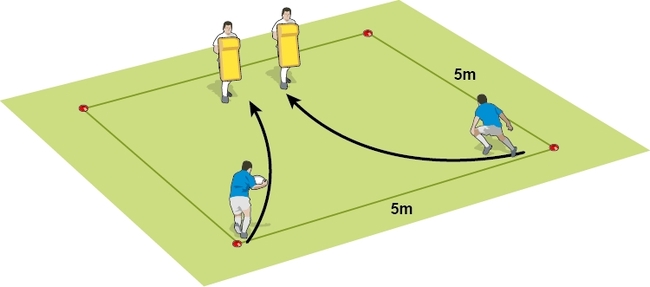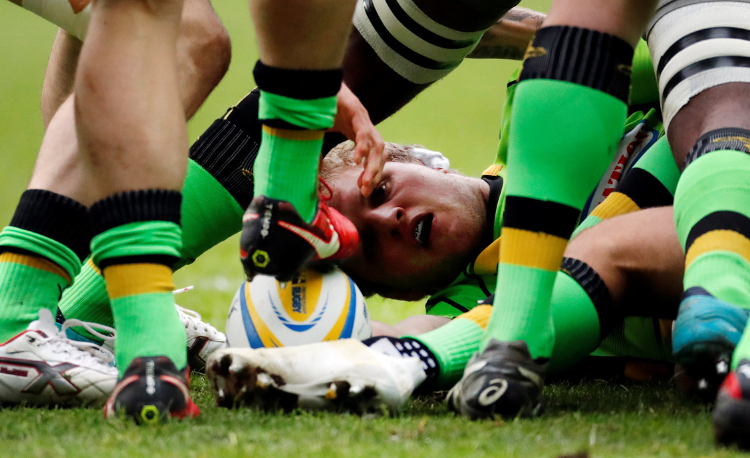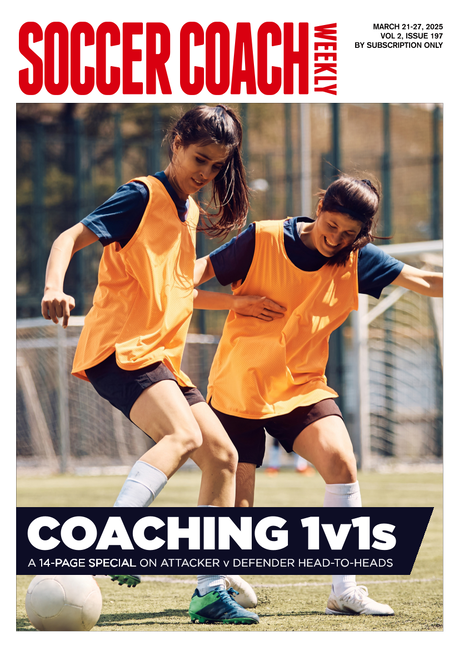Be strong in the tackle
Use this session to build players’ understanding of how to keep going forward in the tackle and make life much harder for the defence.
WHY USE IT
Collapsing in the tackle gives the defence more opportunity to steal or slow down the ball, because it is more difficult for support players to get in behind the ball carrier.
set up
Cones and balls; a 25m wide, 20m long box for the game.
HOW TO PLAY
ACTIVITY: Put an attacker 2-5m from a line of cones. Each cone is 2m in front of the next. A feeder is placed 3m to the side. Set three defenders out as per the top illustration. The attacker runs up the line of cones, receives a pass and tries to get as far down the line of cones as possible. When they receive the ball, nominate a defender to tackle them. After the tackle, the feeder replaces the tackler, the ball carrier becomes the feeder and the tackler is the new attacker.
GAME SITUATION: Put four defenders along the midline of the box (bottom illustration). Four attackers run around in their half of the box. They decide which attacker will try to break through. They run over the mid-line and the defence tries to stop them. Mark how far they make, with a point for 5m made and the ball secured (available to be passed from a ruck) or two points for a try scored. There is no passing allowed in the defence zone.
COACHING POINTS
- Ball carrier: Drive forward, keeping whole body moving, while keeping hips forward.
- Protect ball by keeping it away from defenders.
- An attacker receives a pass as they run along a line of cones
- Three lettered defenders wait to be nominated
Related Files
- Call out a letter. The corresponding tackler comes in to make a tackle
- The feeder can come in to support. Develop by having another tackler coming forward at the same time
- Attackers run around with the ball until one decides to break the line and score
- The defence cannot leave their zone
- One point for 5m covered or two points for a try
- No passing is allowed in the defensive zone
Premium Books
Newsletter Sign Up
Coaches Testimonials

Gerald Kearney, Downtown Las Vegas Soccer Club

Paul Butler, Florida, USA

Rick Shields, Springboro, USA

Tony Green, Pierrefonds Titans, Quebec, Canada
Subscribe Today
Be a more effective, more successful rugby coach
In a recent survey 89% of subscribers said Rugby Coach Weekly makes them more confident, 91% said Rugby Coach Weekly makes them a more effective coach and 93% said Rugby Coach Weekly makes them more inspired.
Get Weekly Inspiration
All the latest techniques and approaches
Rugby Coach Weekly offers proven and easy to use rugby drills, coaching sessions, practice plans, small-sided games, warm-ups, training tips and advice.
We've been at the cutting edge of rugby coaching since we launched in 2005, creating resources for the grassroots youth coach, following best practice from around the world and insights from the professional game.
